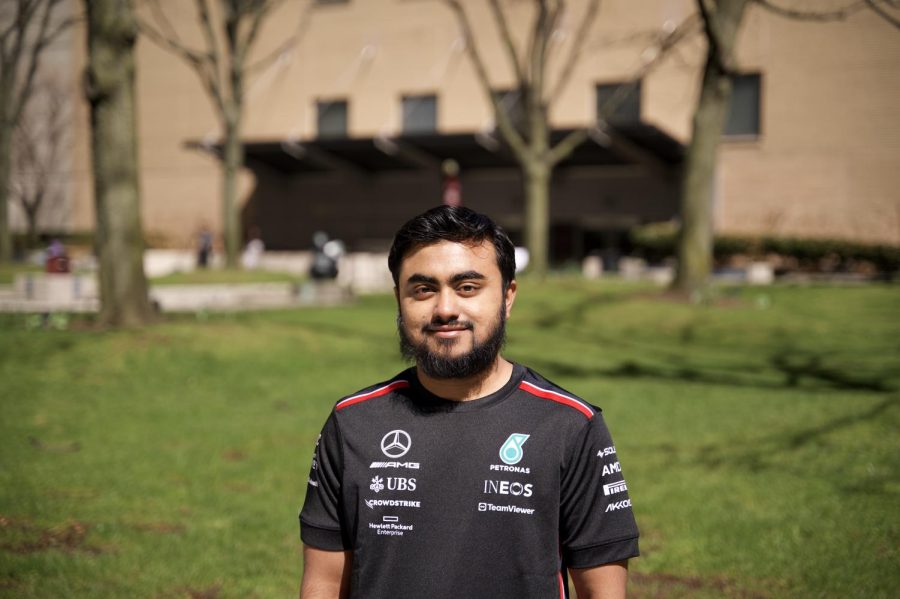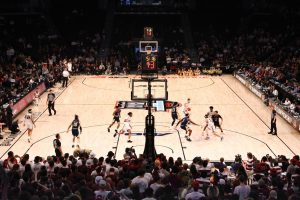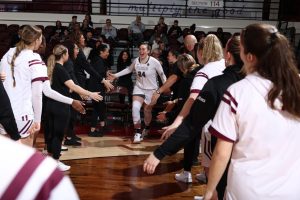Fordham Senior Wins Formula 3 Race in Abu Dhabi
Mahidur Rahman competed in his first-ever live race, hoping to kick off a successful future in motorsports
Mahidur Rahman, FCLC ’23, reigned victorious in the Abu Dhabi Formula 3 race, despite a setback in the qualifier.
April 13, 2023
Have you ever wondered what it would feel like to fly down a road at 136 miles per hour? Mahidur Rahman, Fordham College at Lincoln Center ’23, can tell you. In fact, he’s won a race doing it. The Fordham student recently won his first unofficial Formula 3 (F3) race in Abu Dhabi, United Arab Emirates.
Rahman became interested in racing a year ago through friends who were go-kart racers, and he trained for F3 races using computer simulators. These simulators are meant to imitate all aspects of the race by including a real steering wheel and pedals. However, they fail to emulate some of the physical aspects of racing.
Rahman took the plunge and participated in his first amateur race on March 14, 2023, at the Yas Marina Circuit in the sunny, 95-degree weather of Abu Dhabi after spending over six months practicing that track. It was an unofficial F3 race, which is where amateur racers have the opportunity to prove their skill and attract sponsors.
Once drivers have their official certification, they can participate in the Federation Internationale de l’Automobile (FIA) sponsored Formula racing competitions. The Yas Marina Circuit is about 1.36 miles in length and F3 drivers complete 15 laps per race. For comparison, Formula 1 drivers drive between 50-70 laps to reach the required 190 miles.
“The aerodynamics of the racecar — it’s like an upside down jet plane. The feeling of that is amazing because it feels like your car is built onto the ground while your body is flying in the air, so that experience — it’s electrifying.” Mahidur Rahman, FCLC ’23
“I was really taken aback when I actually was racing because doing the simulator races versus the real-life races, it’s a lot different,” Rahman said. “You’ll face g-forces that are almost eight times your own body weight.”
The g-forces and extreme heat of live racing make the whole event a sweaty and physically challenging affair. The impact is no joke — F1 drivers lose around 6 to 8 pounds of water weight after every race.
After training for months on the at-home simulator, Rahman signed up for an amateur F3 race. He was set up with a car and an experienced team that gave him live pointers throughout the event and helped him during times of distress, such as the qualifying round.
The first test the aspiring racer faced was getting through the qualifiers, which would determine his starting position in the finals. Not only was this Rahman’s first time in an F3 race — it was his first time in a formula car at all. Rahman felt that he was just getting comfortable in the car when things started to go wrong.
“I was just getting a feel for the car itself and trying to set lap times, and halfway through, my car completely died, and I spun out on the racetrack,” Rahman said. “All I was smelling was major heat, and the car’s battery completely malfunctioned.”
Luckily no one was hurt, but the car malfunction meant that Rahman would start in 10th place on race day — dead last. In the end Rahman did not complete the qualifier and had to be towed back by the safety car. Despite this, he says he still felt confident about the race itself.
In F3 races, it is the first couple of laps where drivers are closest to each other and where most of the battles happen between competitors. While the cars in front of Rahman battled each other on tight corners and maneuvered riskily, he trailed closely behind while letting his tires warm up. Cool tires have less traction on the asphalt and make it harder to control the vehicle at faster speeds.
Once the tires were warmed up, Rahman made his moves. Maneuvering deftly around the track, he was able to slipstream off the other drivers and overtake them. Slipstreaming is when a driver gains an aerodynamic advantage by positioning themselves directly behind an opponent. The driver in front takes on the wind resistance, slowing them down. With the help of his team and the use of his strategic game plan, Rahman was able to move into first position by the 11th lap and coast for the rest of the race.
Apart from his racing ability, Rahman gave credit to the team behind him for his victory. As he raced, they told him whether he needed to slow down or speed up based on the charts available to them. These charts monitor heat temperatures, braking points and the car’s entry speed on corners.
Despite the challenges of the qualifying round and the extreme heat, Rahman won his first-ever race. “Honestly, the actual race day felt a lot easier and less hectic,” he said.
In the future, Rahman hopes to get his certification at a racing school so that he can compete in races organized by FIA and hopefully find sponsors and a team of his own. For now though, he plans to practice as much as he can on the simulators and focus on setting better lap times.
Until he can get back out on the track, he plans to remember his favorite part about racing: “The aerodynamics of the racecar — it’s like an upside down jet plane. The feeling of that is amazing because it feels like your car is built onto the ground while your body is flying in the air, so that experience — it’s electrifying.”















